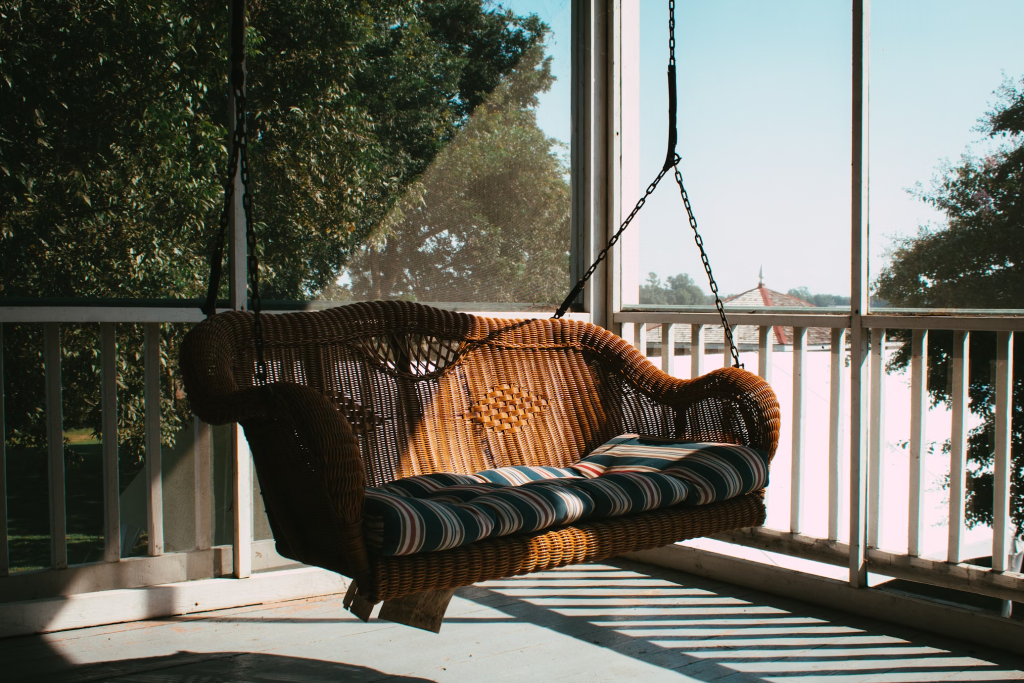Creating a verandah is a fantastic way to extend your living space and enjoy the outdoors, but it doesn’t have to break the bank. With a smart plan and practical choices, you can construct a verandah that looks great and serves your needs without spending a fortune.

This guide is packed with budget-friendly ideas and inspiration from some of the most stylish and functional verandas Melbourne homeowners have embraced.
Planning Your Budget-Friendly Verandah
Define The Purpose
Decide what you want to use the verandah for—entertaining guests, outdoor dining, or a shaded play area for kids. This will influence design, size, and material choices. Knowing the purpose from the outset helps prevent unnecessary expenses and ensures the result is practical.
Measure And Sketch
Accurately measure the area where the verandah will be built. Draft a simple layout to visualise how it will fit within your yard or side of the house. Ensure your sketch includes heights and roof angles, which are key to estimating the material needed.
Set Your Budget Early
Know how much you’re willing to spend and break it into categories like timber, roofing, hardware, and additional elements like decking or lighting. Keep a buffer for unexpected costs. Staying within budget requires tracking every dollar, so list all potential expenses before buying anything.
Designing For Simplicity And Affordability
Stick To Basic Shapes
Rectangular verandahs are easier and cheaper to build. Complex shapes increase cutting, materials, and labour. The simpler the design, the less room for error, saving time and stress during construction.
Use Modular Dimensions
Design within standard lengths for timber and sheeting to avoid waste and save on material costs. For instance, if timber comes in 2.4-metre lengths, base your design around this to avoid excess cutting and offcuts.
Keep It Attached
Lean-to verandahs, which use one side of the house as structural support, are typically more cost-effective than freestanding ones. Using your home as one of the main support structures reduces the number of posts and beams you need to buy and install.
Choosing Materials Wisely
Economical Timber Choices
Treated pine is affordable, readily available, and well-suited for outdoor projects. It resists termites and moisture, which makes it ideal for Australian weather. Avoid exotic hardwoods unless you aim for a premium finish, as they can significantly increase costs.
Practical Roofing Solutions
Corrugated PVC or polycarbonate sheeting provides ample protection while remaining budget-friendly. Thicker sheets reduce noise and last longer. Clear or tinted options can provide natural lighting while still offering UV protection.
Basic But Strong Hardware
Use galvanised bolts and fixings for durability. These are specifically designed for outdoor use and help prevent rust and deterioration. Avoid over-specifying unless the structure is in a high-wind or storm-prone area.
Tips To Build Your Verandah On A Budget
1. Get Permission If Needed
Before digging or hammering, ensure you’re following the rules. In most Australian states, small verandahs attached to a house may not require council approval, but it’s always wise to check.
Some councils have specific requirements based on height, area, or location. Failing to obtain necessary permissions could result in hefty fines or even removal orders for your newly built verandah. A quick call or visit to your local council can save a lot of hassle later on.
2. Prepare The Ground
A solid verandah starts with solid preparation. Clear any vegetation, level the site, and ensure adequate drainage so water doesn’t pool beneath your structure. Use string lines and pegs to mark the layout, ensuring accuracy. Proper planning at this stage helps with the alignment and placement of posts, which is critical for structural integrity.
3. Set The Posts
Your posts are the backbone of the verandah. If you’re building on an existing concrete slab, use bolt-down stirrups. For in-ground construction, dig post holes to the required depth. Ensure all posts are square and plumb, checking with a spirit level before setting them. Quick-set concrete is a great budget-friendly option that speeds up the build and offers a sturdy base.
4. Install The Beams
Once your posts are secure, installing the horizontal beams takes time. Attach beams across the tops of the posts and secure one directly to the house if applicable. Make sure the beams are level and firmly bolted to avoid future sagging. This framework forms the skeleton of your verandah and must be stable and straight.
5. Add Rafters And Bracing
Rafters give your verandah its roof shape and support. Space rafters evenly—usually 600mm apart—across the top beams. Don’t skip the diagonal bracing, especially in areas prone to high winds. Bracing adds rigidity and helps prevent lateral movement, essential for safety and longevity.
6. Fix The Roofing Sheets
Now comes the satisfying part—putting on the roof! Start at the lowest edge and overlap the roofing sheets correctly to allow water runoff. Use screws with rubber washers to secure them, which helps prevent leaks. Ensure the roof has an adequate pitch (slope) to allow rainwater to drain efficiently.
7. Guttering And Water Runoff
To protect your verandah and surrounding areas, install gutters if your roof size demands it. Connect these to a downpipe or rainwater tank to manage the runoff. Directing water away from your house and garden beds helps prevent erosion and maintains the structural integrity of your verandah.
8. Seal And Paint
The final step is about protection and presentation. Use a quality outdoor sealant or paint designed for timber. This adds a protective layer against UV rays, moisture, and weathering. Besides enhancing the look of your verandah, it significantly extends the life of your timber and reduces future maintenance costs.
Long-Term Savings Tips
Maintain Regularly
Repaint or reseal the timber every two years to prevent rot and damage. Replacing any damaged roofing panels promptly also helps prevent expensive repairs in the future.
Plan For Expansion
If you want to extend the verandah later, design your current structure to facilitate future changes. Use bolt-together components and leave room for future connections.
Keep It Simple
Fancy features like decorative trims, high-end lighting, or premium wood finishes can wait. Focus on the core structure first and upgrade gradually.
Reuse And Recycle
Use leftover materials from other projects. Salvaged wood, metal brackets, or old tiles can often be repurposed.
Conclusion
You don’t need a massive budget to build a functional, stylish verandah. With clear planning, smart material choices, and some elbow grease, you can build a comfortable outdoor space for a fraction of the cost of hiring professionals.
Whether working with a small courtyard or a large backyard, a DIY verandah offers practical benefits and long-term enjoyment, without the hefty price tag.
Frequently Asked Questions
Do I Need Council Approval To Build A Verandah In Australia?
It depends on your local council regulations and the size of the verandah. Small, attached verandahs may not require approval in many Australian states, but larger or freestanding structures often do. It’s essential to check with your local council before starting to avoid penalties or having to dismantle the build later. A quick inquiry can save you from major headaches down the road.
What Type Of Roofing Is Best For A Budget-Friendly Verandah?
Corrugated metal sheets (like Colourbond or zincalume) are popular and affordable for verandah roofs. They are lightweight, durable, and easy to install, making them ideal for DIY projects. These sheets also offer good weather resistance and come in various colours to match your home. Make sure your roof has the correct pitch to ensure effective drainage.
Can I Build A Verandah Myself, Or Should I Hire A Professional?
You can build a verandah with basic carpentry skills and access to the right tools. DIY construction can save you thousands of dollars, especially for straightforward designs. However, if the project is large or involves complex elements like electrical work or intricate roofing, hiring a licensed professional might be safer and ensure compliance with building codes. Always assess your confidence and capability before starting.
